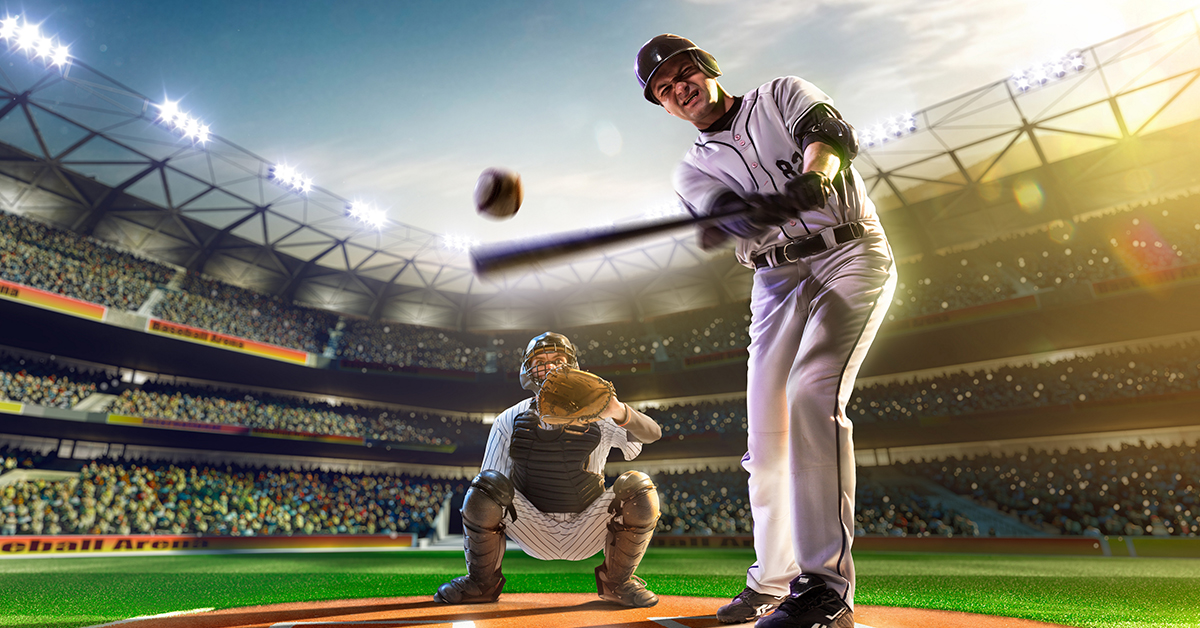
Baseball Injuries Part 2: Hitters
Baseball has long been one of America's favorite sports. But whether you're playing recreationally, in your backyard, or on a professional team, you may be risking certain injuries. While Part 1 focused on the overuse injuries of pitchers, this part will focus on some of the injuries faced by those at bat:
Overuse Injuries
Overuse injuries occur when an action is repeated that puts pressure on tissue, muscles or joints. If the body is not allowed to rest or heal properly, it can result in pain for the player now and later in life. If left untreated, this can become an issue like tendonitis, where the tendons become inflamed. In baseball, this damage is especially likely to occur in the shoulder, elbow, and wrist, because players put the most stress to those areas when they throw a ball or swing a bat.
Muscle Strain
Muscle strain is what occurs when a muscle is pushed past its limit. Severe muscle strain can cause the muscle to pull, or worst case, can cause a muscle tear. Muscle strains are graded according to severity, from a mild and relatively quick healing grade 1 strain to a grade 3 strain, which is a complete muscle tear. Strains happen when a muscle or tendon is suddenly stretched beyond its normal capacity, whether due to an impact or a sudden load. Baseball players are especially susceptible to muscle strains in the thigh muscles, although hitters running bases may be more likely to strain the calf and oblique abdominal muscles.
Meniscus Tears
Meniscal tears are often the result of trauma or injury to the knee, but they can also occur due to degenerative conditions like osteoarthritis. Most of the meniscus does not receive a blood supply, so they may grow worse over time. Symptoms vary depending on how and where the meniscus is torn, but symptoms can include pain, instability or feeling the knee "giving," stiffness, swelling, and an impaired range of motion. Sliding, popping, or locking may occur if the tear is left untreated because loose fragments from the meniscus tear will drift into the joint. Meniscus injuries can be especially bad for batters, as it can make the pivoting action needed to swing a bat difficult to achieve. Meniscus tears can also affect a player's running abilities, as well as their ability to slide.
Achilles Tendonitis
The Achilles tendon, which is responsible for connecting the heel bone to the two main calf muscles, enables us to walk, run, jump, and perform many other motions. Each of your two Achilles tendons carry your entire body weight every time you take a step, although certain activities can put even more stress on the tendon. Achilles tendonitis is painful inflammation of the achilles tendon, and sometimes swelling of the sheath that surrounds the tendon. Overuse injuries from work or sports are the most common cause of tendonitis, so baseball players should extra care to stretch before and after play. Tenderness and burning pain while performing or after performing an activity are common symptoms. It's important to rest and treat Achilles tendonitis as soon as possible, as the condition can become chronic if left untreated.
Medial Epicondylitis
Medial Epicondylitis is commonly called Golfer's Elbow, but it is also known as baseball elbow. This injury is one of the more common overuse injuries seen in sports, as it can occur from swinging a bat or racket, or from a variety of other actions used in sports. While this injury is more common among pitchers than it is hitters, the act of swinging a bat can leads to overuse injuries of the elbow. Athletes are among the most likely to develop an overuse injury of the elbow. Also, adolescents and children players have a high risk of developing overuse injuries because their bones have not fully matured and therefore can't handle as much stress as adult bones.
How do you avoid these injuries?
At any level of any sport, athletes will want to play and practice as much as they can. It's important to remember that stress on your body adds up, so players may avoid serious injuries by stretching, resting, and staying hydrated.
Wrist, shoulder, or elbow injuries can occur overtime if the player does not take adequate care to rest and stretch. Tendons, ligaments, and muscles work together in the elbow to all for easy and pain-free movement. Overuse injuries may occur when movements are repeated without allowing for proper healing time. These motions, like throwing overhand, bending, or twisting the arm, can cause scarring of the tendons over time. Early treatment is important, because the blood supply to your tendons is limited, so healing after scarring can be difficult.
Getting Back Out There
Treatment varies depending on the severity, location, and type of injury. If conservative treatment like rest, ice, compression, and elevation, or RICE, and a set period of physical therapy do not treat the problem, your doctor may consider surgery, depending on the injury's severity. The procedure performed depends on the location and severity of the injury. Regardless of what procedure is performed, rehabilitation will require physical therapy and dedication to stretching and strengthening exercises to heal the injury properly and to avoid another strain in the future.


